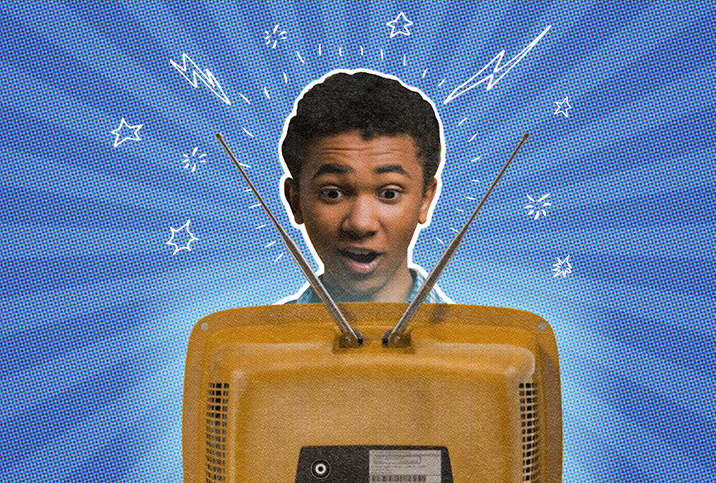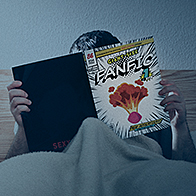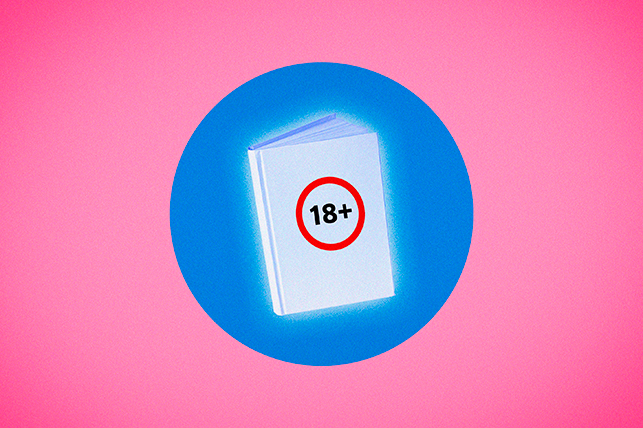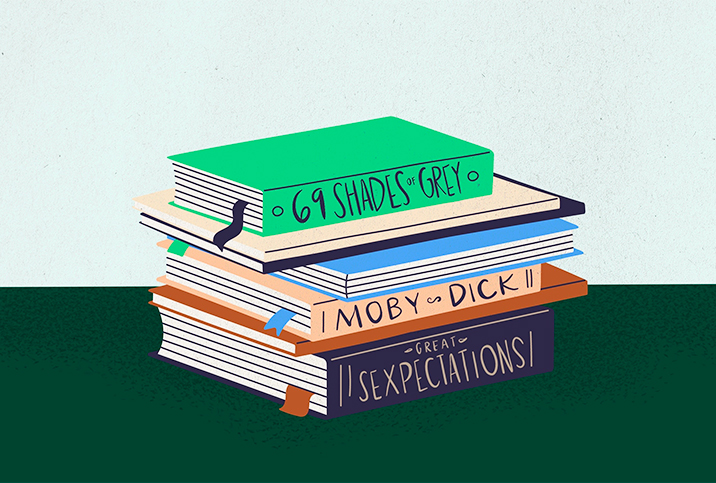Animated Characters Can Fuel Sexual Awakenings

Editor's note: Some of the sources for this article requested their full names not be used.
Long before Lynn, now 33, ever developed a crush on a boy—before she even knew she liked boys—she knew she liked the titular talking fox in Disney's 1973 animated version of "Robin Hood."
Her voice grew wistful as she recalled the exact moment in the movie that solidified her childhood affection for the foxy hero: It was when Robin (voiced by the comforting baritones of British-born Shakespearean actor Brian Bedford) disguised himself as a stork to compete in the treacherous Prince John's archery competition, only to be unmasked and seized by his guards. When a tearful Maid Marian begs the phony king to spare her lover's life, there's a moment when Robin explains how he loves Marian "more than life itself."
At age 5, Lynn didn't quite understand the feelings the scene elicited.
"I remember being embarrassed for them because I just thought it was so sappy and dumb, but it also made me feel weird things in my tummy," admitted the San Diego-based speech-language pathologist.
Attraction is common from childhood to adulthood
"From a human sexual development perspective, [fictional characters] are a safe place to project your developing desires and awareness of sexuality," said Ash Compton, M.A., L.M.F.T., a licensed therapist at Austin Family Counseling in Austin, Texas.
For both Tessa, 29, based in Seattle, and Virginia 39, from Austin, their girlhood fictosexual flame was Dimitri, the humanoid but no less animated deuteragonist of the 1997 version of "Anastasia."
"Swoony, adventurous animated guys are my thing," Tessa explained, while Virginia mused that the attraction was likely due to the snarky-but-flirty character's impossibly perfect '90s curtain hairdo.
Mickey, now 25, who lives in Austin, fessed up to being sweet on Zuko from the mid-2000s Nickelodeon animated series "Avatar: The Last Airbender" when she was a youngster. Meanwhile, Stephanie, 32, of Basel, Switzerland, carried her adolescent torch for John Smith from Disney's animated "Pocahontas," and Courtnie, also from Austin, was smitten with Doug Funnie of the Nickelodeon/Disney animated show, "Doug."
Research suggests early infatuation with fictional characters is often reflective of attachment bonds, which are formed during infancy between children and their caregivers. A 2021 study published in the Journal of Social and Personal Relationships said our caregiver-inspired attachment bonds impact how we engage and attach to fictional characters—and with our peers in the future.
Interestingly, while the female-identifying survey respondents cited animated infatuations kicking off around ages 5 and 6, males tended to report cartoon crushes that popped up around 10 or 11. The science checks out, considering boys tend to go through stages of sexual development later than girls.
"I think a lot of adults would like to think that puberty begets the onset of a child or teen seeing themselves as a sexual being, but it happens slowly over time in stages," Compton said.
Young animation love encourages real-life love
"It's common to start mimicking dating behavior, noticing nakedness or noticing love or talking about dating and body differences [in a family setting] around ages 4 to 7," Compton said. "By ages 7 to 12, kids may begin to start projecting their developing desires onto cartoons and external media. It's common around this age that a child would be more exposed to viewing or watching or listening to cartoons, internet content, gaming, films and general media content. These forums offer a wider lens of archetype and archetypal mates, so to speak."
While female-identifying study participants named a wide spectrum of animated loves, an overwhelming majority of male-identifying respondents gave the same answer: Jasmine from Disney's 1992 animated movie "Aladdin." When pressed, the overwhelming majority of them couldn't explain it.
"Perhaps it had something to do with dress," Compton said. "She's a sultry character. Part of me wonders if there's some exotifying going on with Jasmine, if she represented 'other' to white males growing up in America."
Compton thinks a big part of the fictional attraction might have to do with patrilineal inclinations of culture, which establish expectations of who you should be attracted to as a cisgender, heterosexual male.
Jasmine and Ariel (from "The Little Mermaid"), with their sexy garb and long hair and big eyes, satisfy popular tropes of cis-hetero "male desire," she theorized.
Can animated attraction become problematic?
"Fictosexuality," also known as "toonophilia," is the attraction, emotional attachment or sexual draw to animated characters. Researchers in this particular area of study date fictosexuality as far back as the 18th century when people became infatuated with stage characters.
According to an Italian study published in the Frontiers in Psychology in 2021, though many people worry their attraction to a fictional character might be a "problem," cartoon crushes seem to be fairly "normal" and "prevalent."
In Japan, "otaku" is a word used to describe someone interested in anime and manga. Japanese psychiatrist Saitō Tamaki, author of "Beautiful Fighting Girl," said otaku is a legitimate sexual attraction to 2D characters, where people separate the reality they experience with these fictional characters. "Nijikon" is a term for people who find 2D characters more attractive than real human beings—preferring fiction over reality.
Though many people worry their attraction to a fictional character might be a 'problem,' cartoon crushes seem to be fairly 'normal' and 'prevalent.'
"It's interesting that you point to Japan, a culture that has perhaps been more willing to adopt and normalize two-dimensional and parasocial and fictoromantic relationships more quickly than the U.S.," Compton said. "But I think we're collectively on the edge of a new era of sexuality, one aligned with the metaverse. Many teens I have seen over the years are spending a ton of time on [gaming platforms like] Roblox, and it's not just that they consume these fictional figures through media but they also kind of become them; the games are set up to identify through avatar. While this can be a function with which to explore identity, it can also keep you a step away from yourself."
For the most part, attraction to animated characters isn't likely to become problematic, Compton emphasized.
"Storytelling and fairy tales are an important narrative and archetypal function because they help us determine patterns of behavior and what archetypes are playing through us when we're going through certain things," Compton said.
"There's a merging of 2D and 3D happening that is absolutely going to impact how we view sex and culture," Compton added. "I don't think it's all bad, but I think it's notable, and we might want to take pause to think of how the algorithm and widely consumable archetypes we employ in media impacts our sexual impulses and functioning."




















